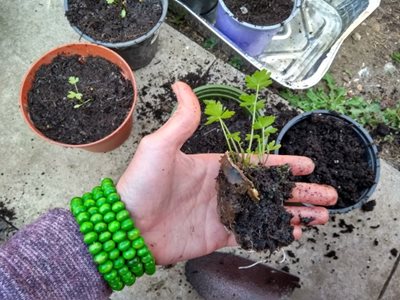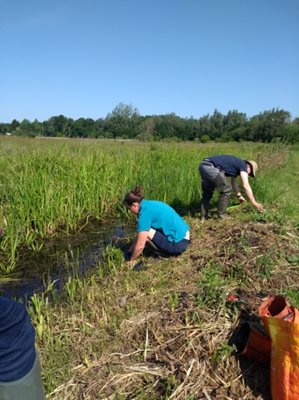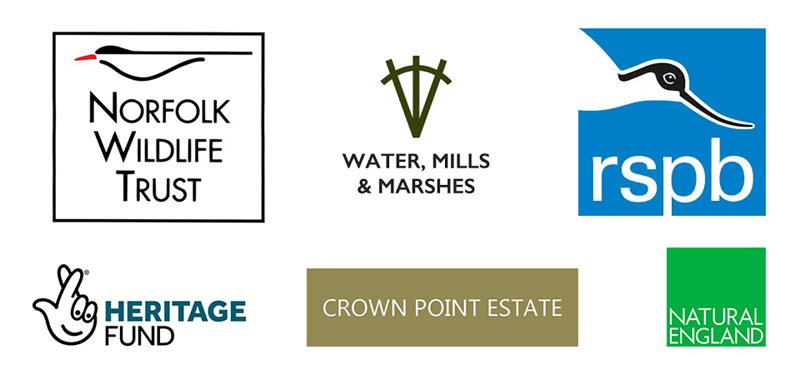For a tall robust plant the greater water-parsnip
Sium latifolium is an increasingly rare and threatened species.
Its scarcity has led it to becoming a priority species for conservation and it is part of the UK biodiversity action plan. An

umbellifer flower, it looks similar to the more familiar verge-side cow parsley. One of its remaining strongholds is the grazing marshes of the Norfolk Broads and it was from dyke edges surrounding Cantley Marshes that children from four Norfolk schools collected the plant’s precious seeds.
The Water, Mills and Marshes partnership scheme is a four year £4.5million managed by the Broads Authority with funding from the National Lottery Heritage Fund. Its education team, having gained permission from Natural England, decided to run a ‘Conservation in Action’ project that would explain to children, through participation, the principles and processes of introducing a native species back to areas where they had previously been.
The children discovered that the plant has declined significantly over the last fifty years and its distribution has contracted leaving isolated populations. The reason for this decline maybe a combination of mechanical and intensive dyke clearance, over grazing and general habitat loss as a result of drainage.
The four schools taking part (Acle St. Edmund C of E primary, Horton C of E School, Lingwood Primary Academy and North Denes Primary school) also learnt abou

t re-wilding and species re-introductions, plus how to collect the seeds, rear the plants in pots, locate suitable habitat to plant the ‘plugs’ and monitor the plants’ development and success.
Norfolk Wildlife Trust was happy to be involved, and in June prepared areas of dyke edges at NWT Thorpe Marshes in Norwich for the planting of the young water-parsnip shoots by the children. Unfortunately, no one could have anticipated the restrictions that this spring and summer would bring. Despite the closure of the schools, several of the teachers took plant trays home, as did the WMM education staff, one even utilising a neighbour’s water-fountain. In total forty-six plants were successfully ‘potted up’ and transported to Thorpe Marshes. Natasha Howard, who headed up the project, planted the young flowers on the children’s behalf. She did, however, make a short video for the children to watch.
The water parsnip is perennial and can grow up to two metres high, so can easily be found if you know what to look for. It is hoped that over the next few years they will flourish and the children can visit the reserve each summer and see the contribution they made to the return of this iconic marshland flower.
NWT Thorpe Marshes is leased to Norfolk Wildlife Trust to protect as a nature reserve by the Arminghall Settlement Trustees, managed by Crown Point estate. Although close to Norwich city centre, and in part a former gravel pit, it is a great site for birds. It also hosts a large variety of other animals and plants including the rare Norfolk hawker dragonfly and the endangered water vole. There are no parking facilities, but access can be gained via the railway line footbridge on Whitlingham lane, off the Yarmouth Road.
